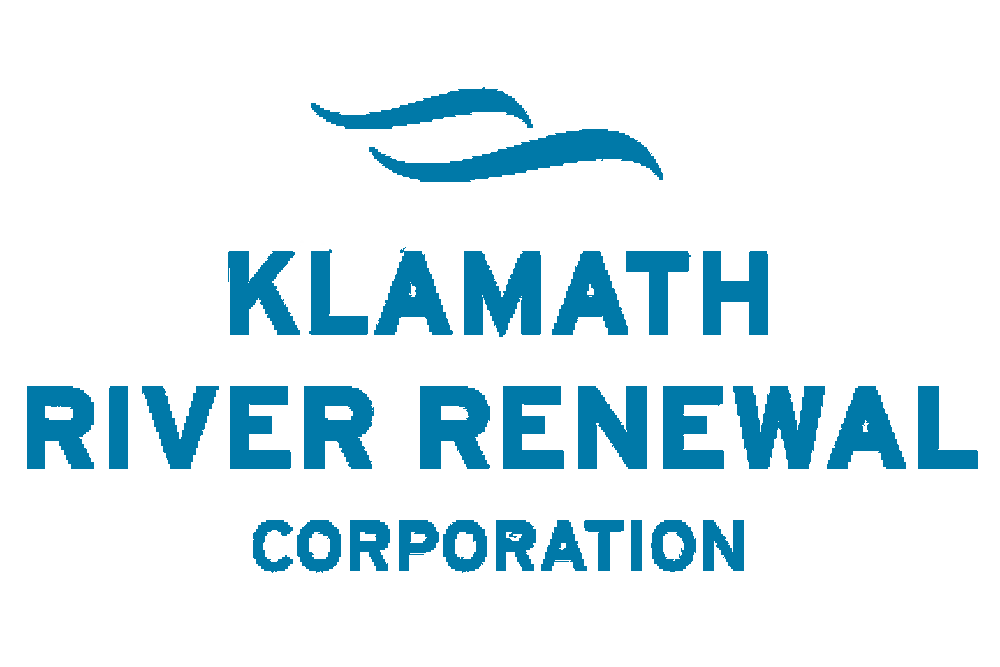FOR IMMEDIATE RELEASE
April 25, 2019
CONTACT: Matt Cox
(916) 847-6459 (cell)
matt@klamathrenewal.org
KLAMATH BASIN – Yesterday, the Klamath River Renewal Corporation (KRRC) took a major step toward dam removal and creating a free-flowing Klamath River by entering into a dam removal design-build contract with construction firm Kiewit Infrastructure West Co. of Fairfield, California. The initial award authorizes $18.1 million in preliminary services, with a further award for project implementation work to follow once design is finalized.
“Selecting Kiewit marks another key achievement and brings KRRC closer to completing the largest dam removal and river restoration project in U.S. history. This contract will help demonstrate KRRC’s capacity to undertake the project consistent with a license transfer application pending before the Federal Energy Regulatory Commission,” said Mark Bransom, KRRC Chief Executive Officer. “Once implemented, the project will help restore the vitality of the Klamath River so that it can support all communities in the basin.”
Kiewit has extensive experience in major construction projects, most recently the emergency reconstruction of the Oroville Dam spillways, which involved removal and repair of both the main flood control and emergency spillways in less than 18 months as well extensive debris and sediment removal, development of access roads and other work. Kiewit has also undertaken relevant projects such as the Folsom Dam Spillway Construction (Phases II & IV), East Toba and Montrose Hydroelectric Design Build and the Kwalsa and Upper Stave Hydroelectric Design Build.
Kiewit has assigned Knight Piesold as the lead designer of the KRRC project. The selection of the restoration contractor will be forthcoming.
“We are very proud to have been selected by KRRC. This project has many similarities to other complex water and hydroelectric projects we’ve delivered across North America,” said Jamie Wisenbaker, senior vice president, Kiewit Infrastructure West Co. “We fully understand the breadth and importance of this undertaking and are excited and committed to safely delivering a high-quality project that meets the expectations of KRRC, the community and all key stakeholders in the region. We look forward to partnering with KRRC and getting started.”
Under this agreement, Kiewit will utilize the Progressive Design-Build (PDB) delivery method, assuming responsibility for both the design and execution of dam removal and river restoration, to be completed across two phases.
The preliminary services phase will include design, planning, permitting support, native seed bank development, and other preparation for the later drawdown of the reservoirs. This work will begin immediately.
The project implementation phase will be awarded to Kiewit at the end of the preliminary services phase, beginning with pre-drawdown work including dam modifications for drawdown of the reservoirs, road and bridge access improvements to accommodate construction vehicle traffic, and bridge and culvert improvements to accommodate new river and creek geometry.
Following the reservoir drawdown, project implementation will focus on dam and hydropower facilities removal, recreation facilities removal, creation of new recreation facilities, and restoration of formerly inundated land and other disturbed areas.
The project implementation phase is contingent on the Federal Energy Regulatory Commission’s approval of license transfer and license surrender, as well as other regulatory permits.
Early in the preliminary services process, Kiewit will study the project site and develop a detailed project design, including obtaining competitive bids for various elements of the work. With this information, KRRC and Kiewit will agree on a final “Guaranteed Maximum Price” (GMP) for all project implementation work. The GMP ensures that the contractor will be responsible for absorbing cost overruns, protecting the ratepayers and taxpayers who are funding this project.
On the current schedule, it is expected that Kiewit will complete due diligence and submit a GMP based on 60-percent design by January 2020.
The PDB contract requires that local and tribal businesses and individuals have the opportunity to participate, and to increase the number of ways that this project will benefit the surrounding communities and local economy.
“For many years, local tribes have been saying ‘bring the salmon home.’ They have advocated passionately for this project,” said Lester Snow, KRRC Board President. “KRRC wishes to acknowledge the enormous and effective work of countless tribal members who truly laid the foundation for this project.”
“Kiewit has every technical skill in the world to get the job done, but beyond that, they just feel like the right fit,” said Bransom. “Kiewit also comes to the project with relevant experience, including with the states of California and Oregon, as well as PacifiCorp (a Berkshire Hathaway Energy company), through successfully completed construction projects as well as other business relationships.”
The Klamath River Renewal Corporation (KRRC) is an independent nonprofit organization founded in 2016 as part of the amended Klamath Hydroelectric Settlement Agreement (KHSA). KRRC is part of a cooperative effort to re-establish the natural vitality of the Klamath River so that it can support all communities in the basin. Signatories of the amended KHSA incude the states of California and Oregon, local governments, tribal nations, dam owner PacifiCorp, irrigators, and several conservation and fishing groups. KRRC was formed for the sole purpose of taking ownership of four PacifiCorps dams — J.C. Boyle, Copco No. 1 & 2, and Iron Gate – and then removing these dams, restoring formerly inundated lands, and implementing required mitigation measures in compliance with all applicable federal, state, and local regulations. KRRC’s work is funded by PacifiCorp customer surcharges and California Proposition 1 water bond funds.
KRRC values transparency and cooperation with all stakeholders and is committed to working with residents and governments to minimize any nuisance or negative impacts while enhancing the project’s local benefits.
